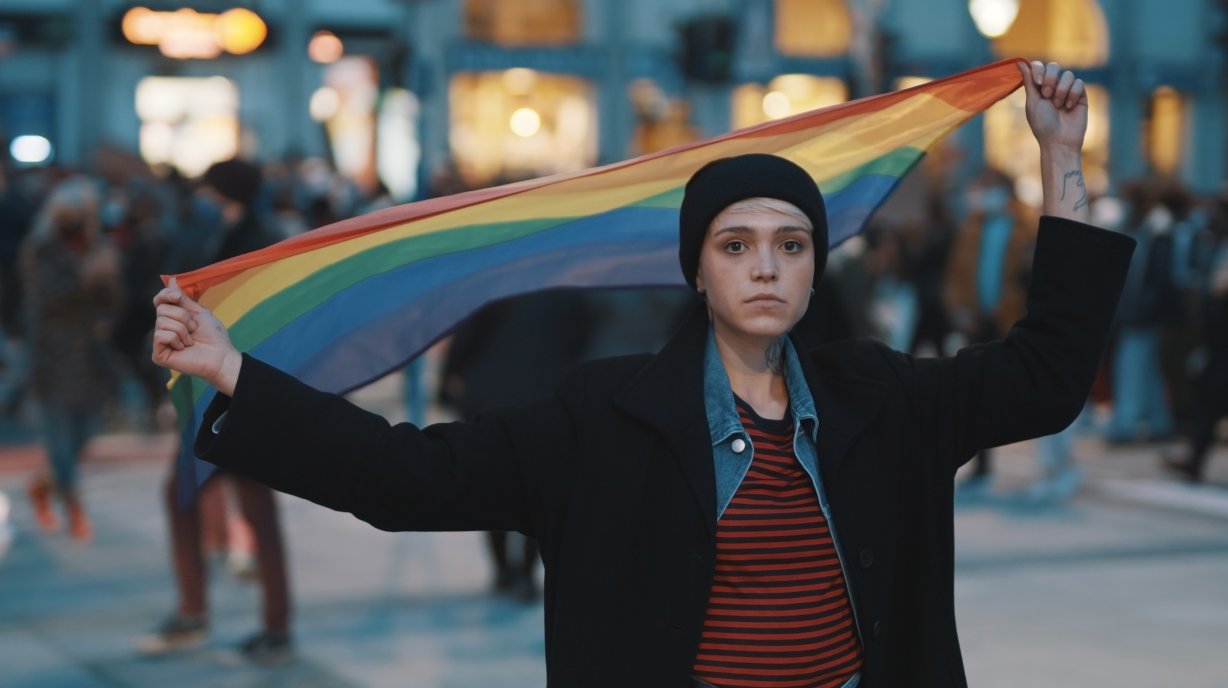
Social justice

Picture by CameraCraft on Adobe Stock
Since the Netherlands in 2001, only 34 countries have legalized same-sex marriage. Have these legal norms led to more benevolence towards same-sex couples? The work of economists Sylvie Blasco, Eva Moreno Galbis and Jeremy Tanguy reveals that the evolution of individual opinions depends on the adequacy of laws with the norm of one's community or partner.
On 23 April 2013, the French Parliament passed the law known as "Mariage pour tous" ("Marriage for all") under the presidency of François Hollande. France thus became the ninth European country to open marriage to same-sex couples. There are currently fourteen. This law had to be defended to the end, as different communities, gathered under the banner "Manif pour tous" ("Demonstration for all"), protested and increased pressure against the proposal of Justice Minister Christiane Taubira in the months preceding the vote. In the end, the assembly approved the law with 331 votes for, 225 against and one abstention. Ten years later, attitudes towards homosexuality have continued to change. According to an IFOP1, poll in 2019, 72% of French people would accept the fact that their child is homosexual, compared to 61% in 2003 and only 44% in 1996.
Legislative measures to protect the rights of homosexuals are taken by democratic governements thus in principle following the opinion of the majority of the population. However, does this contribute to the openness of citizens and to the integration of this right as a new social norm2. To date, 34 out of 195 countries allow same-sex marriage. In the United States, 69% of the population were in favour of same-sex marriage in 2022, compared to 54% in 2014. In the European Union, 61% of citizens agreed that "same-sex marriages should be allowed throughout Europe" in 2015, up from 44% in 2006.
Yet some countries or communities remain strongly hostile to same-sex couples and reject such laws. This is evidenced by the recent rise in homophobic crimes: according to the FBI's annual report, the number of crimes targeting gays, lesbians and bisexuals in the United States in 2018 increased by almost 6% over the previous year. In France, the number of testimonies received by S.O.S. Homophobie (S.O.S. Homophobia), after a peak at the time of the passage of the law in 2013, saw an increase of more than 80% from 2015 to 2019, when it reached 2,396 testimonies of LGBTI (Lesbian, Gay, Transgender, Bisexual or Intersex) phobic attacks.
Questioning the contradiction between acceptance and tolerance, three economists Sylvie Blasco, Eva Moreno Galbis and Jeremy Tanguy have studied the importance of social ties in changing opinions after the enactment of a same-sex marriage law in Social ties and the influence of public policies on individual opinions: The case of same-sex marriage laws.
The study is based on data from a European survey, the European Social Survey 2002-2016, and more specifically the response to the statement: "Gays and lesbians should be able to live their lives as they wish". The idea is to compare the responses, in the form of a score, of 17 countries, about half of which legalised same-sex marriage between 2002 and 20163.
In these countries, people are divided into two types of communities: homophobic and non-homophobic. For this the researchers used two approaches.
In the first approach, the community is defined in terms of country, age, gender and year. It is assumed that if 60% of the individuals in the community (defined at the country, age, gender and year level) have 'gay-friendly' views, the community is non-homophobic. In a second approach, the authors focus on individuals born outside their country of residence, i.e. immigrants. All countries in the world are classified as homophobic or non-homophobic, using data from the World Value Survey and the Gay Voyageur website. Immigrants are thus classified into those from homophobic countries and those from non-homophobic countries. The authors exploit the fact that immigrants tend to develop relationships mainly with people from their own geographical origin.

Picture by Srdjan on Adobe Stock
Researchers distinguish two categories of social ties: strong ties and weak ties. Strong ties represent a partner, an official spouse in the eyes of the administration, with whom one shares "strong ties". Weak ties" can be broken more easily. They represent friends, associations, colleagues - in short, the community. Individuals may report spending a majority of time with their strong ties, their partners, or a majority of time with their weak ties, their communities. They are thus divided into two categories.
The study shows that the relative influence of weak and strong ties in the formation of an opinion by individuals depends on the fit between the approved law and the local social norm. When there is a match between the law and the social norm of a non-homophobic community, individuals who are initially opposed to same-sex marriage but spend a lot of time with their friends/community are more likely to change their minds positively than those who spend all their time with their partner. Conversely, those opposed to same-sex marriage who are closer to their partners than their friends are less likely to be influenced by a positive view of homosexuality.
Second, if the law violates the social norm of a homophobic community, the results are reversed. As the partisan gay marriage law passes, the homophobic community rejects it all the more. On average, the community's view of same-sex marriage will be very negative and therefore the more time an individual spends with their community the less likely they are to have a positive view of same-sex marriage. The influence of weak ties in positively changing opinion therefore falls sharply compared to the case where the law aligns with the social norm.
Weak ties may therefore play into the acceptance of a new social norm about the rights of same-sex couples. In a 2016 study, researchers David Brockman and Joshua Kalla held door-to-door discussions about transgender people in South Florida4. They showed that these conversations reduced prejudice and transphobia for more than three months, demonstrating the importance of social interaction in accepting a new norm.
To encourage the acceptance of these new norms by homophobic people, public policies could encourage these weak ties. For example, with longer school hours, children could develop more contacts within the school with children from other communities. They could also promote associations that allow for maximum opportunities to meet people who are different from oneself.